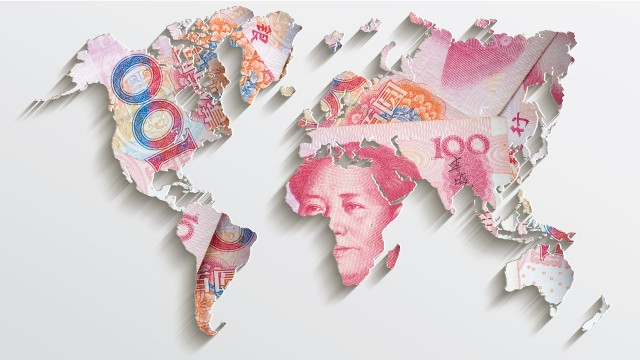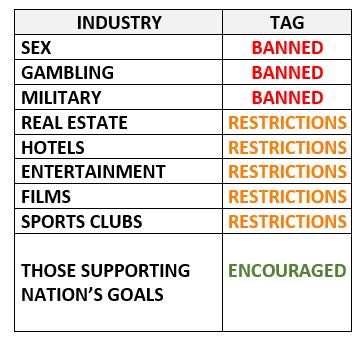Chinese Banks Raising Billions for OBOR Alongside Spending Directives from Beijing & Concern Over Lack of Non-State Business Involvement
Quite apart from the various financial institutions such as the Asian Infrastructure Investment Bank and Silk Road Gold Fund already established by China, Beijing has been pushing its domestic banks to also raise funds.
The China Construction Bank Corp (CCB), the country’s second-biggest bank by assets, has been conducting roadshows to raise at least US$15 billion from onshore and offshore investors, while the Bank of China (BOC), the smallest of the country’s “big four” lenders, aims to raise around US$3 billion in yuan.
CCB and BOC are raising money via their private equity or other investment platforms, as part of a broader central bank push to invest yuan overseas, while funds from offshore investors would be in U.S. dollars. The other members of China’s Big Four banks, the Industrial and Commercial Bank of China and Agricultural Bank of China Ltd are also considering raising Belt and Road funds.
The fundraising comes less than a week after the government said it would strengthen regulation to reduce risk for domestic firms investing abroad and curb “irrational” Belt and Road investment.
Those “irrational” investments have been targeted at speculative and immoral investments often used to funnel money illegally out of China or to artificially inflate assets. These include:
These directives are sensible. It is not uncommon for Chinese casinos, sports clubs and hotels to additionally offer undercover prostitution services – usually Chinese, rather than local girls – for mainly Chinese customers traveling overseas using these establishments. Investing in hotels and real estate can also impose a bubble on local property prices, with many constructions being rather shoddy. Banning Chinese entrepreneurs from being involved in vice and speculation along the OBOR routes and countries involved will help China’s soft diplomacy in the region, and through entities such as the Shanghai Co-Operation Organisation work with other national law enforcement and security teams to keep the seamier side of Chinese outbound investment to a minimum, especially important in what are often conservative and very religious countries.
However, the raising of funds by the nations top banks indicates that Beijing is becoming more focused on investing into the OBOR routes. As I pointed out back in 2013, Chinese ODI is going into Asian Infrastructure investment, a policy that has continued and I expanded upon in the article “Chasing China’s Outbound Direct Investment in which I cautioned against businesses and advisors from the United States and Europe expecting too much from China’s foreign reserves. That money was always earmarked for Asian, and now more specifically, OBOR investments.
Meanwhile, the increasing activity of China’s national banks in funding OBOR projects does tend to come with some caveats. Of the lending projects they have been involved in thus far, many of them have come with stipulations that only state owned companies from the nation concerned may be involved with the project, rather than private enterprises. This has for example been the case in Indonesia. China has become the largest investor and trade partner in Indonesia, and has loaned about US$3 billion to Indonesian banks – Mandiri, BNI and BRI among them via China’s State Owned Banks.
These loans have been made but under certain conditions – the money must filter down to Indonesia’s State-Owned Companies, to better fit with Chinese participating SOE’s. Additionally, 30 percent of the loans must be denominated in RMB to better underpin the internationalization of the currency. This is likely to result in Chinese Build, Operate, and Transfer (BOT) projects largely appearing along OBOR, with projects designed, executed, and build using Chinese technologies, materials and labor, yet funneled through local banking systems controlled by local politicians and governments. This both reduces risk for China, but also keeps the transactions rather more opaque. It is far easier for governments to cover up money flows they control than it is for private enterprises, which are subject to public audit. This impacts on many issues ranging from environmental impact assessments to corruption.
Beijing, while being seen to crack down on Chinese investment in sex and gambling, has not yet seen fit to introduce internal processes to crack on on embezzlement and bribery. That Chinese outbound investment is specifically being kept out of the hands of overseas private contractors and companies to help build OBOR infrastructure is perhaps not the financial bonanza many had expected. Private participation therefore must come from businesses with excellent Government contacts, and learn to survive on sub-contracted work from their own State Owned businesses, throughout the OBOR routes.
About Us
Chris Devonshire-Ellis is the Founding Partner and Chairman of Dezan Shira & Associates. He is based in Europe. The firm provides European businesses and governments with strategic, legal, tax and operational advisory services to SMEs and MNCs investing throughout Asia and has 28 offices across China, India and the ASEAN nations as well as St. Petersburg and Moscow. Please contact the firm at asia@dezshira.com or visit the practice at www.dezshira.com
 Related Reading:
Related Reading:
![]() China Spending Just 2% Of International OBOR Financing On Actual Projects
China Spending Just 2% Of International OBOR Financing On Actual Projects
Silk Road and OBOR Business Intelligence
Dezan Shira & Associates´ Silk Road and OBOR investment brochure offers an introduction to the region and an overview of the services provided by the firm. It is Dezan Shira´s mission to guide investors through the Silk Road´s complex regulatory environment and assist with all aspects of establishing, maintaining and growing business operations in the region.
China’s New Economic Silk Road
This unique and currently only available study into the proposed Silk Road Economic Belt examines the institutional, financial and infrastructure projects that are currently underway and in the planning stage across the entire region. Covering over 60 countries, this book explores the regional reforms, potential problems, opportunities and longer term impact that the Silk Road will have upon Asia, Africa, the Middle East, Europe and the United States.










